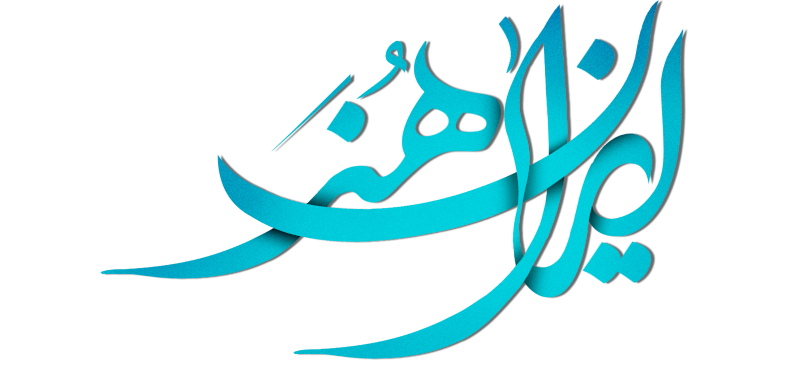Ali Shirazi | Calligrapher
Ali Shirazi and Letters, Sun/ Painting Act of Mr. Calligrapher

Three elements are usually present in Ali Shirazi's calligraphies: elegant huge dimensions, creative composition, and proper letter writing.
Iranart : Three elements are usually present in Ali Shirazi's calligraphies: elegant huge dimensions, creative composition, and proper letter writing.
Famous classical calligrapher Ali Shirazi, who gained recognition two decades ago for his large letters and Nastaliq one-stroke calligraphy, took up this art and soon found his own style and identity. Even at a distance, many people have the ability to identify Shirazi's work without needing to see his signature.
Within this piece, we examine a famous representation of his calligraphy from ten years ago. Additionally, some explanations for his works' uniqueness are provided throughout the review:

1:
The 150 x 150 cm circle artwork was made on canvas using the acrylic technique. The piece's circular shape draws the viewer's attention to the sun and earth's duality, which can provide a framework for several interpretations.
2:
One of the work's intriguing aspects is how the white letters appear to have been created by the artist using the canvas's whiteness and other colored letters, rather than by handwriting them expertly and with particular ability.
3:
Despite the fact that the artist has indicated the top and bottom of the piece by signing it, the composition allows it to be viewed in any direction. Shirazi penned and arranged the letters freely, independently, and solely for aesthetic purposes, which is one of the reasons for that.
4:
The audience is obviously made to feel happy and alive by the work. This is derived from the color scheme, the dance, and Sama, which interweave among the letters and words at the core of the piece.
At first glance, the work's whiteness might stand out more than other colors; however Shirazi intentionally made an effort to make the piece more colorful by choosing letters with holes in them and filling those holes with color. The fact that he painted a different color in each hole is noteworthy.
5:
About this body of work, Shirazi said in an interview: "When I was president of the Isfahan Calligraphers Association about 40 years ago, the association was housed in a stunning Qajar-era building with high ceilings and skylights. The reticulated and colored windows changed hue and image at every hour of the day, creating a charming and pleasant atmosphere that in turn inspired artists to create beautiful works of art."
"That's where the idea for the series of work originated," he continued. "However, I forgot about it until years later, when I visited a Qajar house once again in Sanandaj, and that's when I recalled it. This collection came into being while I was travelling back to Tehran. The pieces in discussion resemble the sun of color, radiating a myriad of hues akin to reticulated windows."

6:
There is no relevant word in between, indicating that the artist's whole concentration is on the letters' aesthetics. Beyond languages and boundaries, one notices the calligraphic and graphic beauty of letters reflected in them.
Shirazi's calligraphies are achieving extraordinary popularity in the Middle Eastern art market. In addition to the Iranian artist's record-breaking $60,000 auction result at Christie's in 2012, he has sold highly sought-after pieces at Bonhams London and other auction houses; examples of these may be found on reliable websites like Art Price.
Master Shirazi's works are held in many of the Middle East's priceless gems, such as the collections of prominent Arab poet and writer, Mohammad Al Murr in the United Arab Emirates; the Al Owais Institute in Dubai; the Anwar Gargash collection in Dubai; the Juma Al Majid collection in Dubai; the museums in Sharjah, Doha, and Qatar; the most significant private collectors, such as Pasargad Bank of Iran; and religious collections in Iran, including Tehran's Quran Museum and Imam Ali Religious Arts Museum.

